 Gibson Explorer 1976 Reissue
Gibson Explorer 1976 Reissue  Dan Russell, Ph.D., Applied Physics, Kettering University
Dan Russell, Ph.D., Applied Physics, Kettering University
Student Research Assistants: Wes Haveman
The research described on this web site has been made possible by a generous donation from Gibson Musical Instruments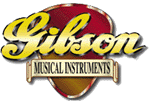
The images and animations on this page are Copyrighted © 1998-2006 Daniel A. Russell, Ph.D, Science and Mathematics
Department, Kettering University, Flint, MI, USA
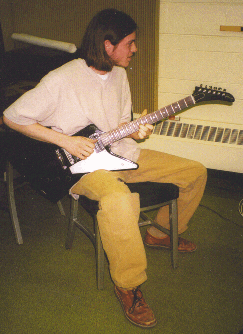
 The electric guitar used for this experiment is a Gibson Explorer '76 , the reissue of the original 1958 modernistic new design.
This guitar belongs to Wesley Haveman, the student who collected most of the data.
The electric guitar used for this experiment is a Gibson Explorer '76 , the reissue of the original 1958 modernistic new design.
This guitar belongs to Wesley Haveman, the student who collected most of the data.
Some Important Specs:
- Scale Length 24.75 inches
- Body Wood Mahogany
- Neck Wood Mahogony
- Pickups 496R ceramic magnet humbucker and 500T ceramic magnet humbucker
The strings were left attached during the experiment, and the guitar was tuned to its playing frequencies: E2 (82 Hz), A2 (110 Hz), D3 (147 Hz), G3 (196 Hz), B3 (247 Hz), and E4 (330 Hz).
The Experiment : Modal Analysis
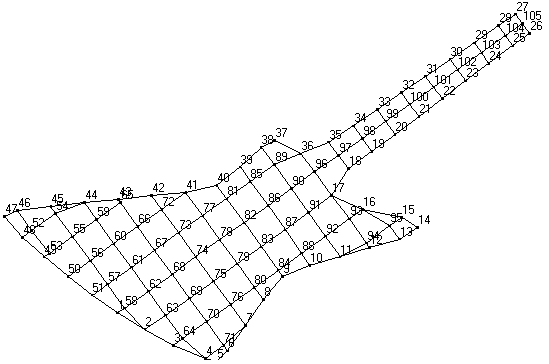
- The mesh - accelerometer attached at point #5, impact hammer used to provide impulsive force at all other points
- Frequency Response Function - acceleration output for each force input
- Curve fitting and postprocessing using STAR Modal
- Generation of animated mode shapes
The Results: Modes of Vibration
The images below show the first several modes of vibration for the Gibson Explorer electric guitar. In all cases the amplitude of vibration is greatly exaggerated for effect in showing the movies. The guitar does not really vibrate with such large amplitudes.
Initial observations make it clear that this guitar vibrates in quite a different fashion from the more traditionally shaped Ephiphone Coronet. The asymmetric shape and the "wings" of the Explorer contribute to more motion of this guitar body. The frequencies of these modes may be problematic because several of them are very close to string frequencies. We will be measuring the input mechanical impedance at the bridge to determine how much string energy is lost to vibration of the body. This is bad, because if the body vibrates the strings cannot sustain as long as they should.
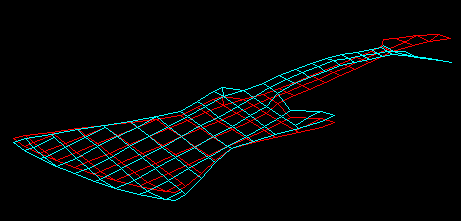 |
Mode #1 - First Bending Mode (46 Hz)
The lowest frequency mode is a simple bending mode, much like a free-free beam. It is probably not of significant interest because it is below the lowest string frequency (82 Hz). |
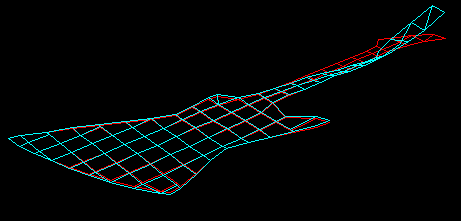 |
Mode #3 - Second Bending Mode (132 Hz) |
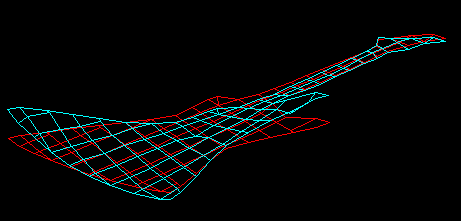 |
Mode #5 - Torsional Mode (221 Hz)
This torsional mode has a very low Q (which means a broad peak in the frequency response function). The width of this peak and its closeness to the B3 string (247 Hz) could be a problem. |
| 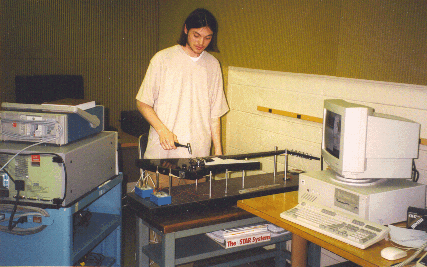
 Back to Dr. Russell's Guitar Research Page
Back to Dr. Russell's Guitar Research Page
 Gibson Explorer 1976 Reissue
Gibson Explorer 1976 Reissue  Dan Russell, Ph.D., Applied Physics, Kettering University
Dan Russell, Ph.D., Applied Physics, Kettering University Gibson Explorer 1976 Reissue
Gibson Explorer 1976 Reissue  Dan Russell, Ph.D., Applied Physics, Kettering University
Dan Russell, Ph.D., Applied Physics, Kettering University
 The electric guitar used for this experiment is a Gibson Explorer '76 , the reissue of the original 1958 modernistic new design.
This guitar belongs to Wesley Haveman, the student who collected most of the data.
The electric guitar used for this experiment is a Gibson Explorer '76 , the reissue of the original 1958 modernistic new design.
This guitar belongs to Wesley Haveman, the student who collected most of the data.

 Back to Dr. Russell's Guitar Research Page
Back to Dr. Russell's Guitar Research Page